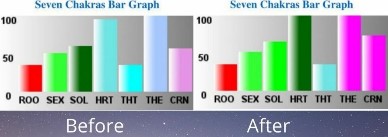Goal: Unveiling the Boundless Reach of Pyramid Energy: Exploring the Expansive Energy Field of Russian Pyramids
Methodology: Embark on a groundbreaking expedition into the mystical realms of pyramid energy, guided by the intrepid explorer John Dunne amidst the frosty wilderness of Northern Canada. In a quest to fathom the boundless expanse of pyramid influence, Dunne devised a ingenious experiment, placing Pyrex bowls brimming with dye-infused water at strategic distances from his 8-foot pyramid sanctuary. With unwavering determination, he observed with bated breath as the enigmatic forces of the pyramid began to unfurl their secrets. Witness as the frosty clutches of winter are defied, as the icy grip of subzero temperatures fails to stifle the life force within the water, kept in perpetual motion by the unseen hands of pyramid energy. Behold, as the swirling currents of vibrant dye converge in a mesmerizing dance, coalescing into a luminous vortex at the heart of the bowl, a testament to the transformative power of pyramid energy.
Results: In a spectacle of awe and wonder, the pyramid's reach extends far beyond the confines of its physical structure, transcending the limitations of distance and climate. He found that the 8’ tall pyramid was able to keep the water from freezing, verifying the same experiment of Dr. Golod in Russia. Moreover, amidst the icy grasp of -15° F temperatures, the thoroughly mixed dye forms a captivating spiral vortex in the center of the bowl, echoing the majestic dance of the cosmos. These effects, spanning a remarkable range of 11 miles from the pyramid, serve as a testament to the indomitable spirit of pyramid energy, weaving its magic across the wintry landscape and offering a beacon of hope in the depths of winter's chill. As the mysteries of pyramid energy continue to unfold, the possibilities for environmental stewardship beckon, offering a glimmer of promise in an ever-changing world.
Goal: Unraveling Pyramid Power: Capturing the Essence of Russian Pyramid Energy
Methodology: We embarked on a mission to decipher the essence of pyramid energy by delving into its fundamental geometry. Using precise measurements, we honed in on the optimal angles of Russian Pyramids, showcasing their profound impact on energy fields. Even though the angle difference was only .245 degrees (76.345 vs. the original estimate of 76.1), the measured energy difference was enormous!
Results: Our findings revealed the intrinsic connection between pyramid geometry and energy fields. Through meticulous analysis, we unveiled the mysteries surrounding the influence of shape on energy, offering valuable insights into ancient wisdom and unlocking the secrets of pyramid power.
This video is our most popular. Many viewers ask why we don't build our pyramids with copper. This video demonstrates why.
Goal: Unveiling Pyramid Potential: Investigating the Influence of Base Metals on Pyramid Functionality
Methodology: In a quest to validate the findings of Russian Pyramid Research and the pioneering work of Nikolai Kozyrev, we constructed two identical-sized Russian pyramids—one crafted from PVC and the other from copper. Employing the precise measurements of the Lecher Antenna, we meticulously analyzed the energy fields emanating from both pyramids.
Results: Our experiment yielded intriguing insights, showcasing a stark contrast in energy field strength between the two pyramids. Not surprisingly, the PVC pyramid exhibited a significantly stronger energy field compared to its copper counterpart. These findings shed light on the impact of base metals on pyramid functionality, affirming the principles outlined by Russian Pyramid Research and Nikolai Kozyrev's groundbreaking studies.
This short video allows you to actually see the energy field of a Russian Pyramid:
Goal: To investigate the potential impact of Russian Pyramids on seasonal streams, aiming to ascertain whether their presence could induce continuous flow. This experiment was designed to replicate the Russian Research in Ukraine that resulted in new streams appearing after installation of a Russian Pyramid.
Methodology: Two Russian Pyramids, one measuring 10 feet and the other 15 feet in height, were strategically placed near a seasonal streambed. This stream, identified as intermittent in topographical maps, typically flowed only after rainfall events. The experiment sought to observe any changes in the stream's behavior following the installation of the pyramids.
Results: Within a remarkably short period of approximately 30 days after the pyramids' installation, the seasonal stream defied its usual pattern and began to flow continuously. This newfound persistence persisted for several years until the removal of the pyramids. The results suggested a profound alteration in the stream's dynamics, highlighting the potential of Russian Pyramids to catalyze enduring changes in natural environments.




